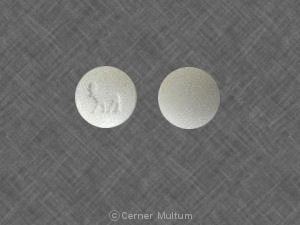Prandin Side Effects
Generic name: repaglinide
Medically reviewed by Drugs.com. Last updated on Aug 23, 2023.
Note: This document contains side effect information about repaglinide. Some dosage forms listed on this page may not apply to the brand name Prandin.
Applies to repaglinide: oral tablet.
Serious side effects of Prandin
Along with its needed effects, repaglinide (the active ingredient contained in Prandin) may cause some unwanted effects. Although not all of these side effects may occur, if they do occur they may need medical attention.
Check with your doctor immediately if any of the following side effects occur while taking repaglinide:
More common
- Anxiety
- blurred vision
- chills
- cold sweats
- coma
- confusion
- cool, pale skin
- depression
- dizziness
- fast heartbeat
- headache
- increased hunger
- nausea
- nightmares
- seizures
- shakiness
- slurred speech
- unusual tiredness or weakness
Less common
- Bladder pain
- bloody or cloudy urine
- difficult, burning, or painful urination
- frequent urge to urinate
- lower back or side pain
Incidence not known
- Back, leg, or stomach pains
- bleeding gums
- blistering, peeling, or loosening of the skin
- bloating
- clay-colored stools
- constipation
- cough
- darkened urine
- diarrhea
- difficulty with breathing
- fever
- general body swelling
- general tiredness and weakness
- indigestion
- itching or rash
- joint or muscle pain
- light-colored stools
- loss of appetite
- nosebleeds
- pains in the side, or abdomen, possibly radiating to the back
- pale skin
- red skin lesions, often with a purple center
- red, irritated eyes
- sore throat
- sores, ulcers, or white spots in the mouth or on the lips
- unpleasant breath odor
- upper right abdominal or stomach pain
- vomiting
- vomiting of blood
- yellow eyes or skin
Other side effects of Prandin
Some side effects of repaglinide may occur that usually do not need medical attention. These side effects may go away during treatment as your body adjusts to the medicine. Also, your health care professional may be able to tell you about ways to prevent or reduce some of these side effects.
Check with your health care professional if any of the following side effects continue or are bothersome or if you have any questions about them:
More common
- Body aches or pain
- difficulty with moving
- ear congestion
- loss of voice
- muscle stiffness
- pain in the joints
- pain or tenderness around the eyes and cheekbones
- sneezing
- sore throat
- stuffy or runny nose
- tightness of the chest
Less common
- Acid or sour stomach
- belching
- burning, crawling, itching, numbness, prickling, "pins and needles", or tingling feelings
- cough producing mucus
- heartburn
- indigestion
- weight gain
Incidence not known
- Hair loss or thinning of the hair
For Healthcare Professionals
Applies to repaglinide: oral tablet.
General
The most frequently reported adverse reactions were changes in blood glucose levels; the occurrence of these reactions was dependent on individual factors such as dietary habits, dose, exercise, and stress.[Ref]
Metabolic
Very common (10% or more): Hypoglycemia (up to 31%)[Ref]
In 12 to 24 week clinical trials, hypoglycemia occurred in 31% of patients receiving this drug compared to 7% of placebo-treated patients. In 1 year trials, hypoglycemia occurred in 16% of patients receiving this drug compared to 19% and 20% of glipizide and glyburide patients, respectively.[Ref]
Cardiovascular
Cardiovascular events were evaluated in trials comparing this drug to sulfonylureas. Serious cardiovascular events including ischemia with this drug were higher at 4% than for sulfonylurea drugs (3%). No excess mortality was associated with this increase. Selected cardiovascular events including hypertension, abnormal EKG, MI, arrhythmias, and palpitations were observed at 1% or less and no more frequently with this drug than with comparator drugs.
Trials of this drug in combination with NPH insulin found 6 serious events of myocardial ischemia.[Ref]
Common (1% to 10%): Chest pain, angina, serious cardiovascular events including ischemia
Frequency not reported: Hypertension, abnormal EKG, MI, arrhythmias, palpitations[Ref]
Hypersensitivity
Common (1% to 10%): Allergy
Uncommon (0.1% to 1%): Allergic skin reactions such as rash, urticaria, and pruritus
Frequency not reported: Anaphylactoid reactions[Ref]
Anaphylactoid reactions were reported in less than 1% of patients. Allergic skin reactions such as rash, urticaria, and pruritus have been observed. There is no reason to suspect cross-allergenicity with sulfonylurea drugs due to the difference in chemical structure.[Ref]
Gastrointestinal
Common (1% to 10%): Nausea, diarrhea, constipation, vomiting, dyspepsia, tooth disorder
Postmarketing reports: Pancreatitis[Ref]
Nervous system
Very common (10% or more): Headache (up to 11%)
Common (1% to 10%): Paresthesia[Ref]
Musculoskeletal
Common (1% to 10%): Arthralgia, back pain[Ref]
Respiratory
Very common (10% or more): Upper respiratory infection (up to 16%)
Common (1% to 10%): Sinusitis, rhinitis, bronchitis[Ref]
Hepatic
Postmarketing experience has included reports of severe hepatic dysfunction including jaundice and hepatitis.[Ref]
Frequency not reported: Elevated liver enzymes
Postmarketing reports: Severe hepatic dysfunction including jaundice and hepatitis[Ref]
Hematologic
Frequency not reported: Thrombocytopenia, leukopenia
Postmarketing reports: Hemolytic anemia[Ref]
Thrombocytopenia or leukopenia have been reported in less than 1% of patients.[Ref]
Ocular
Refraction disorders have been known to result due to changes in blood glucose levels.[Ref]
Rare (less than 0.1%): Blurred vision
Very rare (less than 0.01%): Refraction disorder[Ref]
Dermatologic
Postmarketing reports: Alopecia, Stevens-Johnson syndrome[Ref]
Genitourinary
Common (1% to 10%): Urinary tract infection[Ref]
More about Prandin (repaglinide)
- Check interactions
- Compare alternatives
- Reviews (8)
- Drug images
- Side effects
- Dosage information
- During pregnancy
- Drug class: meglitinides
- Breastfeeding
- En español
Patient resources
Professional resources
Related treatment guides
References
1. Product Information. Prandin (repaglinide). Novo Nordisk Pharmaceuticals Inc. 2001;PROD.
2. Cerner Multum, Inc. UK Summary of Product Characteristics.
3. Cerner Multum, Inc. Australian Product Information.
Further information
Always consult your healthcare provider to ensure the information displayed on this page applies to your personal circumstances.
Some side effects may not be reported. You may report them to the FDA.

